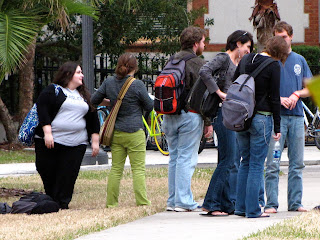
Stratford, Ontario is a city of 30,000 in hilly, prosperous farmland two hours west of Toronto. It feels almost English as England does; otherwise, it’s an unlikely place for first-rate professional theater to thrive, but it does, and about half of it is Shakespearean.
Stratford has four theaters, a thriving downtown, all kinds of eateries, a few bookstores (used and new), a mile-long lake with rich greenery and walkways, just down a hill from the main drag (Ontario Street). There are scores of walkers in both places. In the couple of hours before matinees and evening performances, the place gets pleasantly busy. Families, seniors, middle-aged couples, young couples, along with singles gathering at pubs, it’s a mixed crowd, and everyone seems glad to be there.
I’m back from seeing two plays at Stratford. The first was Do Not Go Gentle into That Good Night, a one-man performance with Wyn Davies as Dylan Thomas. I learned a few things about the Welsh poet, and the acting was thoroughly professional, but I’m afraid I was not bowled over the way I expected to be.
I'm not sure what else Wyn Davies and playwright Leo Pownall could realistically have accomplished, but I don’t know or care much more about Dylan Thomas now than I did before the play, and that seems a less than optimal response. The lubricated Welshman struck me as one more sad, self-destructive poet, often gorgeous in his imagery and cadences, but also windy and full of himself, as Wordsworth the philosopher and Keats the sensualist converge in Thomas’ psyche.
Despite some great lines in the script, the play needed more information on just how it was America that lionized, mythologized, and thus killed the poet at the age of 39. We are asked to believe that he alone didn’t drink himself into a fatal “insult to the brain.” American groupies were equally to blame.
That’s the take on his work, life, and death that I’ve heard since college, but I don’t see why we should infer that he would have been a moderate drinker, better poet and healthier man if he’d stayed in Wales. For all its merits, the play does not address that question, or Thomas’ stature in the canon, or how he lived and wrote aside from whiskey, philandering and envy of Shakespeare. Wyn Davies' professionalism as an actor could not breathe life into those vacancies.
Do Not Go Gentle into That Good Night makes for a moderately interesting, informative (re)introduction to Dylan Thomas’ work and life, but it merits are tepid and spotty, and might well leave viewers wanting more, especially if they already had some knowledge of the poet’s life and work.
Here is the most famous villanelle of all and Dylan Thomas' most famous poem, the source for the play's title:
Do Not Go Gentle into That Good Night by Dylan Thomas : The Poetry Foundation [poem] : Find Poems and Poets. Discover Poetry.Discover Poetry.
In case this has someone all fired up about Welsh power, Dylan Thomas poems were also discussed here on May 15 an 18, 2010. These poems and the Stratford play do make clear that childhood, nature, time, and death were major concerns in Thomas' poems.
Next time: Stratford’s Jacques Brel Is Alive and Well and Living in Paris.

**

















































